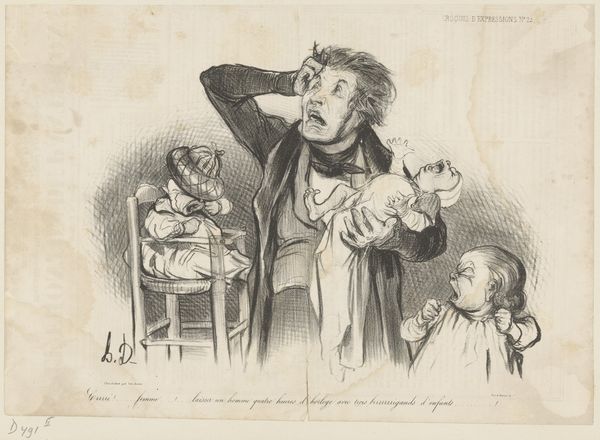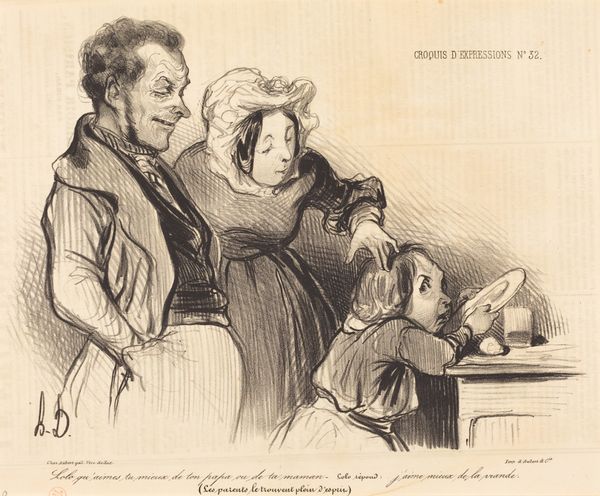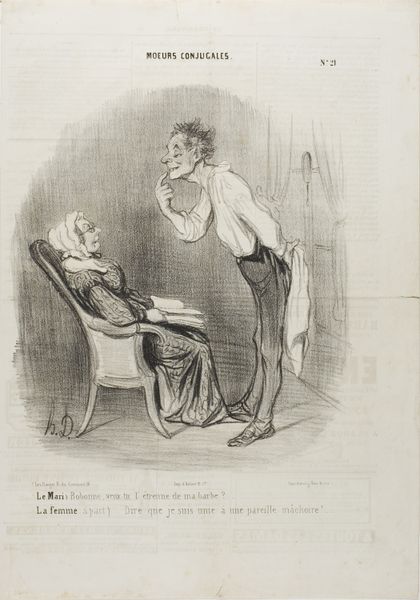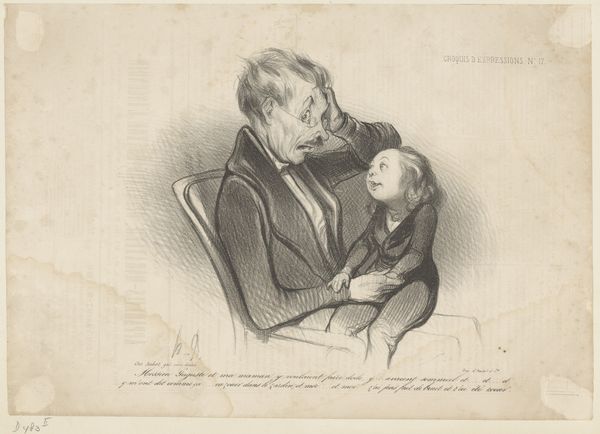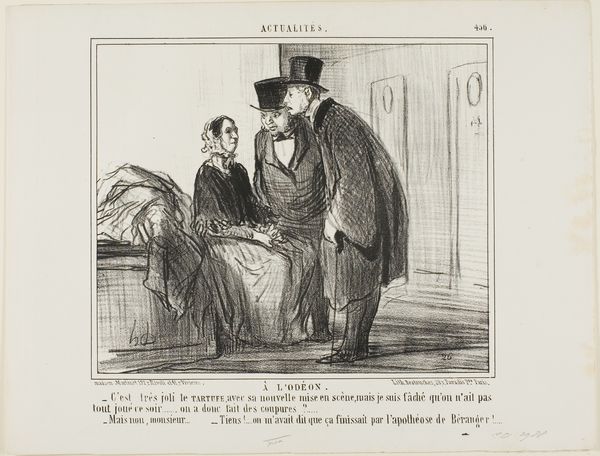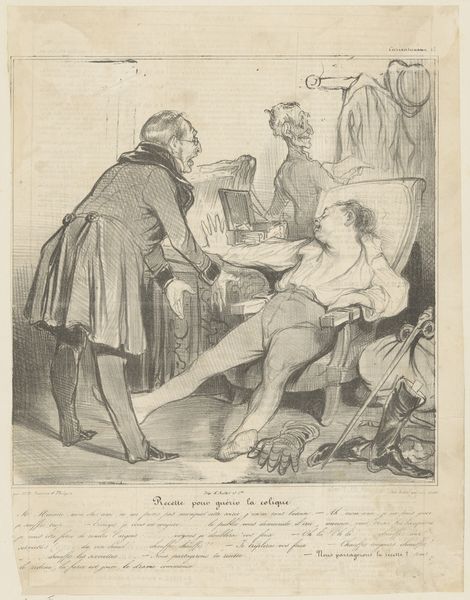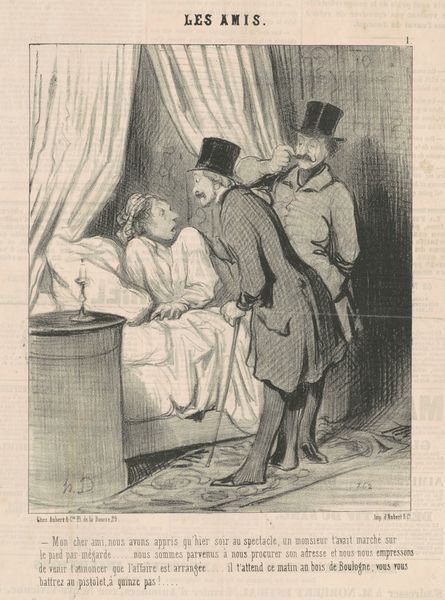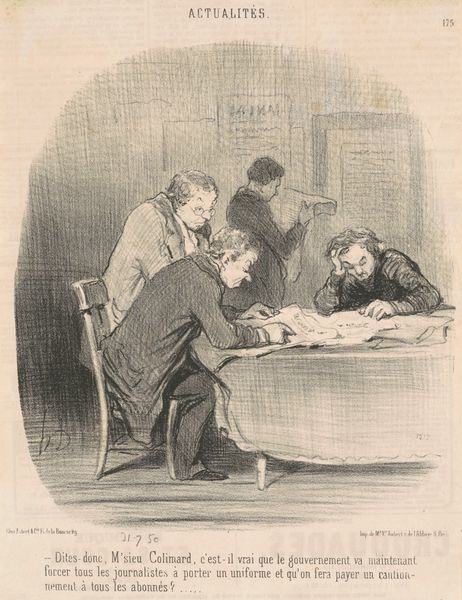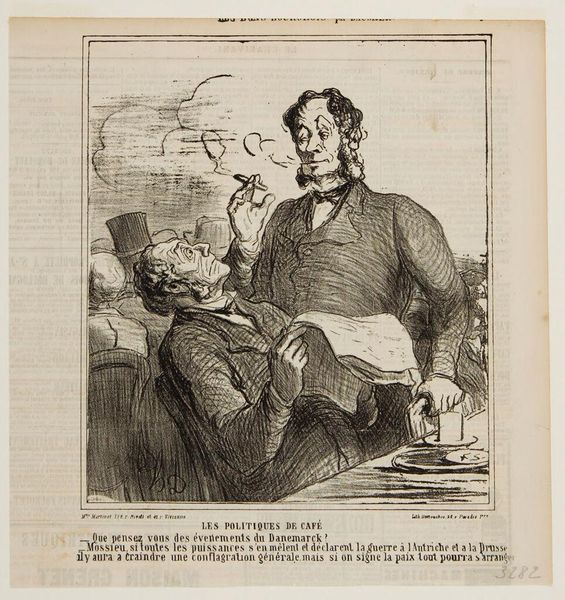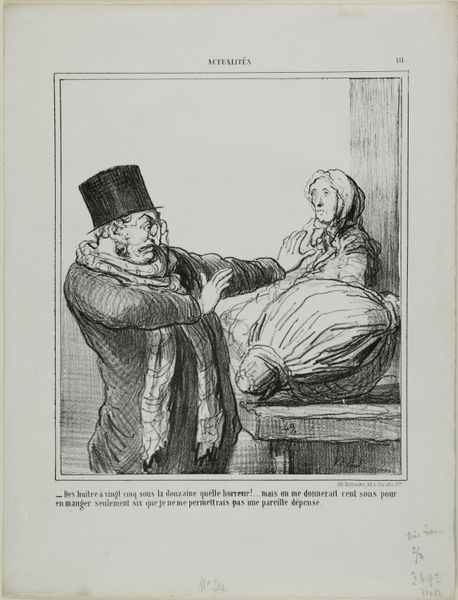
drawing, lithograph, print
#
drawing
#
imaginative character sketch
#
quirky sketch
#
lithograph
# print
#
caricature
#
pencil sketch
#
sketch book
#
personal sketchbook
#
idea generation sketch
#
sketchwork
#
romanticism
#
sketchbook drawing
#
genre-painting
#
storyboard and sketchbook work
#
sketchbook art
#
realism
Copyright: National Gallery of Art: CC0 1.0
Curator: Right now we're looking at a lithograph by Honoré Daumier, created around the 19th century, called "Au fait, maître Barbotteau…" It translates to “Indeed, Master Barbotteau...” a title heavy with anticipation. What strikes you first about it? Editor: Chaos! Delicious, frenetic chaos rendered in tightly controlled lines. There's such nervous energy in those scribbles, you can practically hear the courtroom exploding in exasperation. Curator: Daumier was a master of social commentary, using his art to critique the bourgeoisie of his time. Think of the specific process behind a lithograph, grinding stones, precise drawing with greasy crayons-- he’s holding up a mirror to a society obsessed with the precision of law while showing its messy humanity underneath. Editor: Exactly! And look how he plays with light and shadow— the stark contrasts accentuate the frantic energy, making it all the more satirical. The materials serve the message. The repetition needed to get this reproduced! Daumier understood how to engage with a mass audience. Curator: Absolutely, he was poking fun at legal proceedings. Barbotteau appears completely exasperated and in utter crisis at the hands of another impatiently speaking lawyer. I wonder what secrets we’re not privy to in this specific scene? What hidden, social anxieties? Editor: I’m wondering about the material conditions around the piece at the time and the means by which the subject here would access an image of their own profession. A pretty uncomfortable interaction if this ended up on a judges wall back then! Curator: What Daumier does here goes beyond mere caricature, don't you think? He captures the universal human experience of legal absurdity. The layers of work—the grinding, the sketching, the print—bring so much character, so much meaning to what otherwise seems like an unremarkable scene. Editor: The sheer amount of lithographic work required underscores the extent to which legal quibbles ensnared everyday life, making the means of production ironically symbolic. It gives the humor another layer of seriousness. Curator: It certainly does. Considering that and this conversation, there’s an extra touch of delight found in this piece today. Editor: For me it is a satisfying insight into Daumier's material process alongside the wonderful social critique—both speak volumes.
Comments
No comments
Be the first to comment and join the conversation on the ultimate creative platform.
